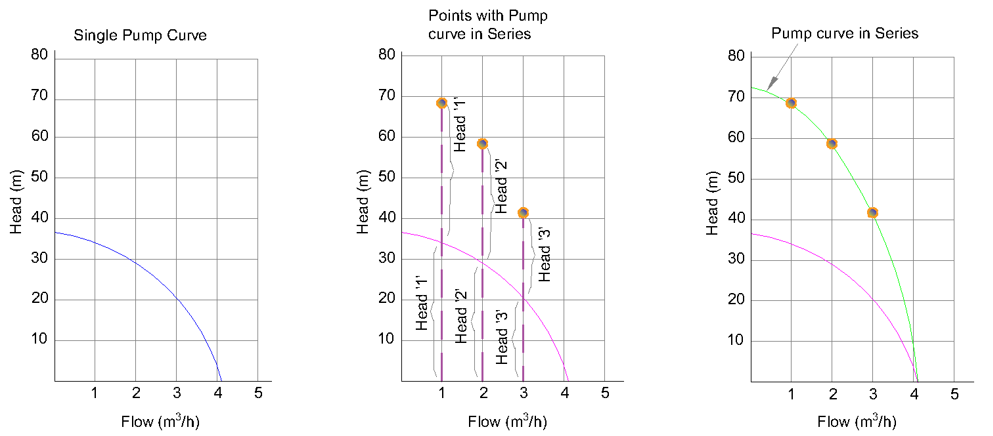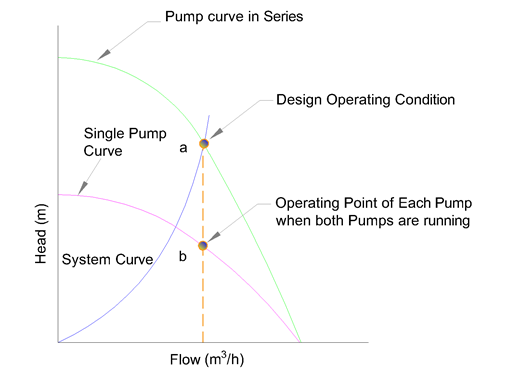- Last updated Jan 10, 2022
- Agricultural Irrigation, Pumping System
Combination of pumps - Pump curve construction
Parallel Combination
In parallel pump curves, select some points of the single pump curve head, double the flow in that head, and plot the points. Connect the points in parallel to determine the combined effect of the two pumps. This is shown in Figure 1.
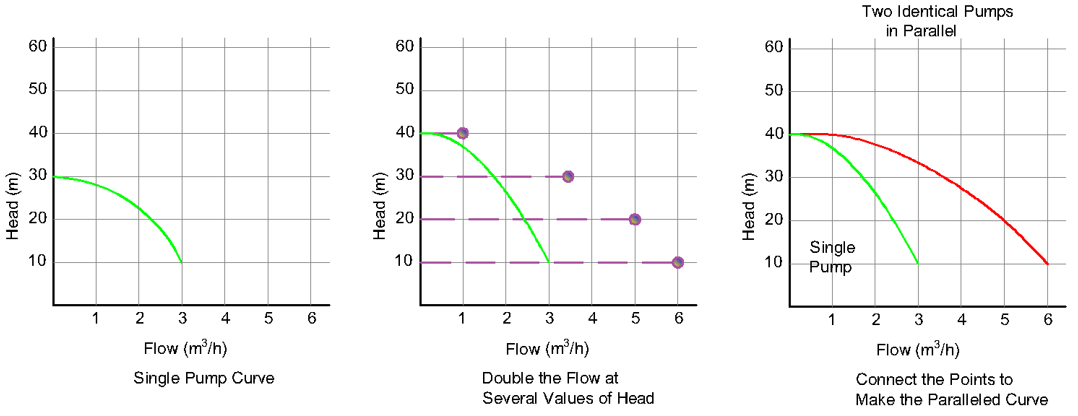
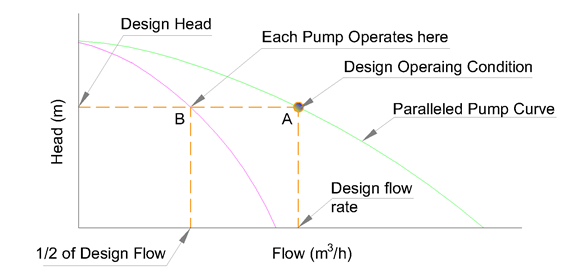
Stand by Operation
One of the major advantages of parallel pumping is standby protection. The function of a standby pump is to continue pumping operation when the first pump becomes inoperative. In parallel pumping, if one of the pumps fails or is out of service, the integrated parallel pump curve disappears, and the point of operation shifts to the intersection of the single pump curve with the system curve already established. This is shown as point C in Figure 3.
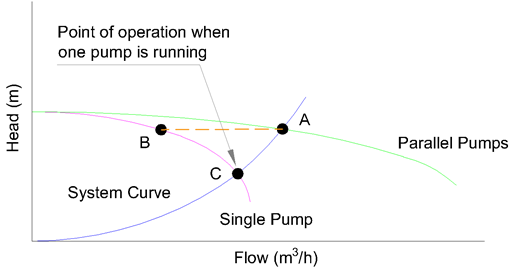
Fig.3 - Stand by Operation
Series Combination
In series pump curves, select some points of the single pump curve flow rate. Construct this composite curve by doubling the head developed by a single pump at every flow rate as illustrated in Figure 4.
